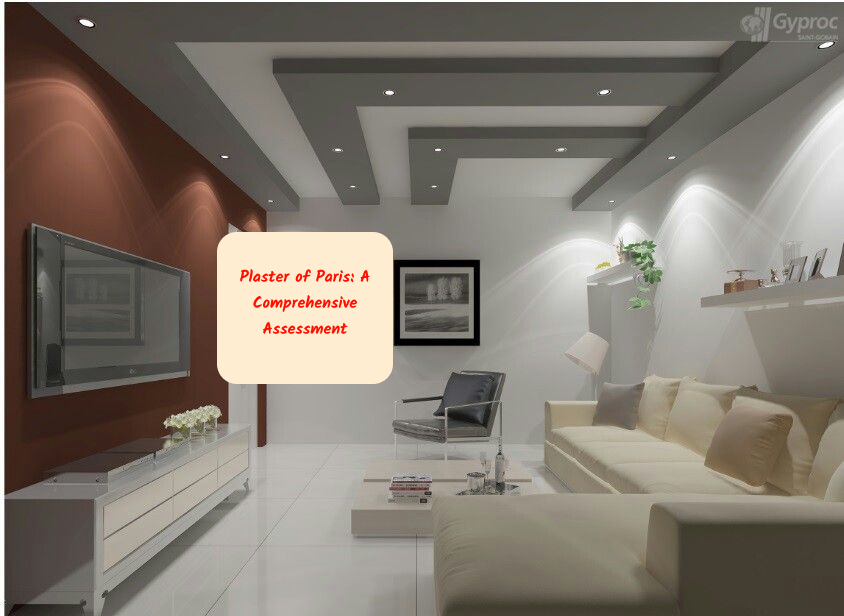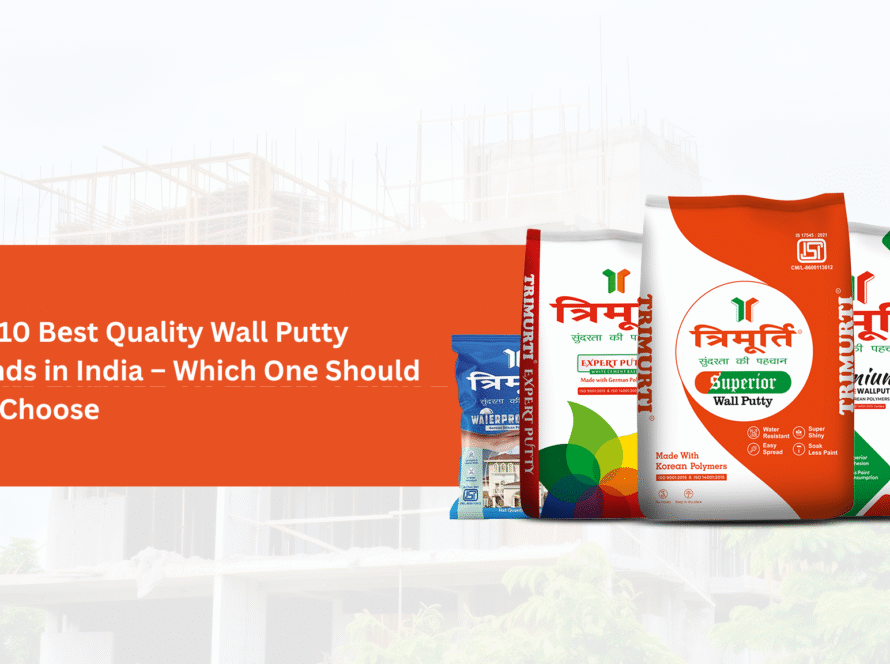
Plaster of Paris powder is one of the most frequently utilised materials in the construction industry. The Gypsum plaster market, a type of Plaster of Paris, was speculated to attain a value of $7.85 billion in 2023 and to exponentiate significantly with a CAGR of 6.2% till 2033. This remarkable increase is primarily down to consistent infrastructure development and urbanisation that has helped the humble construction material achieve this remarkable milestone.
The diverse applicability of Plaster of Paris makes it a perfect construction material. The multiple applications of Plaster of Paris powder hold value for both homeowners and construction professionals. Users need to select the appropriate Plaster of Paris powder to have the desired outcomes. In this blog, we will discuss the various applications of Plaster of Paris and its myriad of benefits.
Plaster of Paris: Overview!
The Plaster of Paris is a centuries-old material that dates back to ancient Egypt. Over the years, its uses have expanded due to the rising demand in the market. Plaster of Paris is chemically expressed as CaSO4. 1/2H2O, gypsum, sulphur, and water are its main constituents. Its chemical composition makes it an ideal material for casting and moulding. The same also makes it easy to set up and work on construction materials.
This powdery substance is made using gypsum, a substance found in mines. The mined material further remains under the subject of heat, with temperatures varying from 120–180 °C.
A person willing to use it needs to set it up by subjecting it to adequate water. Furthermore, after thoroughly mixing it with water, it forms a soft paste that can be applied on surfaces.
Different Types of Plaster of Paris and Their Applications
The following are the different types of POPs used extensively by construction professionals and homeowners:-
- Gypsum Plaster: It is a dehydrated calcium sulphate made using calcining gypsum. With lightweight and high thermal conductivity, it offers high tensile strength, making it an endurance-providing material with less susceptibility to thermal wear and tear. The application provides a long-lasting and decorative interior finish. However, gypsum plaster is best for applications on internal surfaces.
- Expert Plaster: In addition to gypsum and water, it also contains additives. It gives walls the much-needed endurance and aesthetic value. Compared to gypsum plaster, it is a stronger, more durable, and fire-resistant product. Expert plaster is mostly used for external applications.
Using Plaster of Paris: Best Practices
Here are the practices one must employ while using the Plaster of Paris powder to have an unmatched experience:-
- Take the Required Precautions: Safety is the utmost priority while using these materials. One must use the Plaster of Paris powder with protective gear and take general precautions to avoid any unintended outcomes. In addition to all this, you must keep the space ventilated to provide the pathway to heat release due to the exothermic process of POP and water combination.
- Add Adequate Water: Instead of subjecting water to plaster, plaster must be added to water. Plaster Paris water ratio should be two to one. Furthermore, the user needs to stir the mixture thoroughly to remove the lumps and provide the mixture with an aspired consistency.
- Removing Air Bubbles: Slowly pouring into mould and further tilting it to spread the plaster around allows you to get rid of bubbles that may cause further issues. This pouring and repouring process is usually performed before the first coat dries.
- Moulding or Sculpting the Plaster: Moulding Plaster of Paris or sculpting the mixture requires additional inputs. Providing distinct shapes may offer aesthetic value to the construction. However, doing the same requires skills and experience.
- Store the Left Plaster in an Airtight Container: The plaster may interact with air ailments, causing it to lose its property. Placing it under an airtight container makes it less susceptible to the risk of reaction.
Benefits of Using Plaster of Paris
The following are the benefits of using Plaster of Paris powder:-
- Divine Texture: Using POP provides an evenness to the walls that can be used to provide opulence to the new walls or revamp an existing construction. With the same application, a user may also create decorative partitions that make a place more vibrant and visually soothing.
- Comfortable and Hygienic Space: Use of the Plaster of Paris powder repels the presence of insects and fungus growth, providing a person with the aspired space.
- Safe to Use: Plaster of Paris does not demand very much additional input in the safety context, and with general precautions and gear, one can use it efficiently.
Also Know: All You Need To Know About Gypsum Plaster
Concluding Remarks
Plaster of Paris powder is one of the oldest materials used for construction purposes. Gypsum powder and water are the basic ingredients of gypsum plaster and expert plaster. With appropriate practice, one receives better results using plaster of Paris. If you are looking for Plaster of Paris suppliers, consider consulting Trimurti to receive the best Plaster of Paris.




